方案详情
文
美国著名科研单位,圣地亚国家实验室采用LaVision公司的平面激光诱导荧光测试系统(PLIF)对本生灯的火焰进行了OH和甲醛自由基的空间分布的同时测量。激光源采用美国光谱物理公司的Pro 290型大能量Nd:YAG激光器。紫外355nm输出能量达到500毫焦。采用透镜耦合的图像增强器IRO测量微弱的荧光信号。
方案详情

ResearchGateSee discussions, stats,and author profiles for this publication at: https://www.researchgate.net/publication/263508708 ARTICLE INlPRESSAvailable online at www.sciencedirect.comScienceDirectProceedings of the Combustion Institute xxx (2014) xxx-xxx View publication stats Numerical and experimental investigation ofturbulent DME jet flames Article in Proceedings of the Combustion Institute· June 2014 DOl: 10.1016/j.proci.2014.05.147 CITATIONS16 READS126 6 authors, including: Zhaoyu Luo J.A. Sutton University of Connecticut The Ohio State University 30 PUBLICATIONS 379 CITATIONS 78 PUBLICATIONS 458 CITATIONS SEE PROFILE SEE PROFILE Tianfeng Lu University of Connecticut Jacqueline ChenSandia National Laboratories 124 PUBLICATIONS 2,816 CITATIONS 259 PUBLICATIONS 4,839 CITATIONS SEE PROFILE SEE PROFILE Some of the authors of this publication are also working on these related projects: Project Analysis of spectra in variable-density turbulent flows. View project All content following this page was uploaded by Ankit Bhagatwala on 14 August 2014. The user has requested enhancement of the downloaded file. Proceedings of theCombustionInstitute www.elsevier.com/locate/proc Numerical and experimental investigationof turbulent DME jet flames Ankit Bhagatwala a,*, Zhaoyu Luo, Han Shen, Jeffrey A. Sutton,Tianfeng Lu, Jacqueline H. Chen Combustion Research Facility, Sandia National Laboratories, Livermore, CA 94550, USA 'Department of Mechanical Engineering, University of Connecticut, Storrs, CT 06269, USA Department of Mechanical and Aerospace Engineering, The Ohio State University, Columbus, OH 43210, USA Abstract Results are presented here from a three-dimensional direct numerical simulation of a temporally-evolving planar slot jet flame and experimental measurements within a spatially-evolving axisymmetricjet flame operating with DME (dimethyl ether, CH3OCH3) as the fuel. Both simulation and experimentare conducted at a Reynolds number of 13050. The Damkohler number, stoichiometric mixture fractionand fuel and oxidizer compositions also are matched between simulation and experiment. SimultaneousOH/CH20 PLIF imaging is performed experimentally to characterize the spatial structure of the turbulentDME flames. The simulation shows a fully burning flame initially, which undergoes partial extinction andsubsequently, reignition. The scalar dissipation rate (x) increases to a value much greater than thatcalculated from near-extinction strained laminar flames, leading to the observed local extinction. As theturbulence decays, the local values of x decrease and the flame reignites. The reignition process appearsto be strongly dependent on the local x value, which is consistent with previous results for simpler fuels.Statistics of OH and CH20 are compared between simulation and experiment and found to agree. Theapplicability of OH/CH20 (formaldehyde) product imaging as a surrogate for peak heat release rate isinvestigated. The concentration product is found to predict peak heat release rate extremely well in thesimulation data. When this product imaging is applied to the experimental data, a similar extinction/reignition pattern also is observed in the experiments as a function of axial position. A new 30-speciesreduced chemical mechanism for DME was also developed as part of this work. Published by Elsevier Inc. on behalf of The Combustion Institute. Keywords: DNS; Multi-scalar PLIF imaging; Non-premixed; DME; Extinction-reignition 1. Introduction Non-premixed combustion is employed indiverse areas of application ranging from diesel ( * Corresponding author. ) engines to gas turbines for power generation andaviation. One of the main challenges to using thismode of combustion for energy generation isflame stability. The high Reynolds numbers foundin most industrial applications generate significantflame-turbulence interactions which may resultin a partial or complete blow off, decreasing http://dx.doi.org/10.1016/j.proci.2014.05.147 ( 1540-7489/Published by Elsevier Inc. o n behalf of The Combustion Institute. ) ( Please cite this articl e in press as: A. Bhagatwala et al., Proc. C ombust. Inst. ( 2 014), ht tp://dx.doi.org/ 10.1016/j.proci.2014 . 05.147 ) efficiency and increasing unburned hydrocarbonemissions. It is therefore important to understandthe details of this process. This requires a carefullydesigned simulation/experiment that involves par-tial flame extinction due to strong turbulence.With this objective, a 3-D Direct NumericalSimulation (DNS) and experiment of a turbulentDME jet flame undergoing extinction and reigni-tion are performed. The DNS configuration is athree-dimensional,non-premixed,, temporally-evolving slot jet flame, whereas, the experimentconsists of a spatially-evolving, axisymmetric jetflame. Both DNS and experiment were performedat a jet Reynolds number of 13050 and Damkoh-ler number of 0.08. The stoichiometric mixturefraction and composition of the fuel and oxidizerstreams were also matched between DNS andexperiment. The temporally-evolving configurationfor the DNS was chosen over the spatially-evolving configurationbecause it allows theexamination of processes such as local extinctionthat typically occur sufficiently downstream ofthe jet nozzle by invoking Taylor’s hypothesiswith much lower computational expense. PreviousDNS studies using this configuration were focusedon parametric variation in Reynolds number [1]and Damkohler number [2] and their effects onextinction and reignition. The focus of this studyis a comparison of scalar statistics between simu-lation and experiment under similar conditions. Given the differences in the geometry betweenthe simulation and experiment, a direct one-to-one comparison between the DNS and experi-ments is not possible. However, both have beendesigned to lie in the same turbulence and thermo-chemical parameter space by matching the jetReynolds number and global Damkohler number.Therefore, it is reasonable to expect that the statis-tics of thermochemical evolution for both flamesshould be comparable. The paper is organized asfollows: Section 2 describes the simulation setup,numerical methods and problem parameters.Section 3 discusses the experimental setup anddetails of the imaging techniques. Section 4.1describes results pertaining to flame evolutionand its extinction and reignition from the DNS.Section 4.2 deals with the comparison betweenDNS and the experiment, in particular the jointstatistics of OH and CH20 and their utility in pre-dicting peak heat release rate from experimentaldata. Section 5 draws conclusions from the studvand directions for future work. 2.Numerical implementation 2.1. DNS code details The DNS code used in this study is called S3D,a massively parallel compressible reacting flowsolver developed at Sandia National Laboratories [3]. S3D solves the fully compressible Navier-Stokes equations: total energy, species and conti-nuity equations in conservative form with detailedchemistry. The spatial derivatives are computedon an equispaced,finite difference grid usingeighth-order centered finite differences[4]. Atenth-order de-aliasing filter is applied every 10time steps to remove high-wavenumber noise.The solution is integrated in time with a six-stage,fourth-order Runge-Kutta method [5]. A uniformgrid is employed for this simulation with a gridspacing of 25 micronsasiiin all directionstoadequately resolve all radical layers as wellasthe mean Kolmogorov scale. 2.2. Initial and boundary conditions 2.3. Reduced chemical mechanism for DME The present reduced mechanisms for DMEoxidation were developed from the detailed mech-anism by Zhao et al. [8], which consists of 55 spe-cies and 290 elementary reactions. A briefsynopsis of the mechanism reduction is describedhere. Adetailed validation for reductioni Please cite this article in press as: A. Bhagatwala et al., Proc. Combust. Inst. (2014), http://dx.doi.org/10.1016/j.proci.2014.05.147 Fig.1. Schematic of the DNS domain (top); and theexperimental setup (bottom). Table 1 Simulation and experimental parameters. Da is definedas Xqt where t;=D/AU is the jet time scale and xg is theextinction dissipation rate for a 1D strained laminarflame at the same composition. Jet Reynolds number forDNS is defined based on the hydraulic diameter definedas D=2LzH/(Lz+H) where His the jet width and L, isthe spanwise extent of the domain. Simulation domainextents are (Lx,L,,Lz)=(10H,16H,8H). Parameter DNS Expt. Jet Reynolds number, Rejet 13050 13050 Jet width, H (mm) 2.3 N/A Hydraulic diameter, D (mm) 4.1 3.43 Jet velocity, AU (m/s) 98 57 Fuel core width, HZ (mm) 3.6 N/A Pressure, P (atm) 1.0 1.0 Damkohler number,Da 0.08 0.074 Stoichiometric mixture fraction, Zst 0.375 0.375 Unburnt temperature, Tu (K) 450 298 Burnt temperature,Tb (K) 2380 2299 Extinction dissipation rate, Xg (s-) 1950 1210 provided as supplementary material. The chemicalstiffness associated with the short timescales of thehighly reactive radicals in the detailed mechanismsrenders it infeasible to apply the detailed 3. Experimental methods 3.1. Flame conditions The jet flames considered experimentally areaxisymmetric, which flow from a 3.43-mm-diame-ter nozzle into a30 cm × 30 cm low-speed(0.3 m/s) co-flowing oxidizer stream. The fuel(12%DME, 18%H2 and 70%N2) and oxidizerstreams (31% 02 and 69% N2) match the DNScompositions. Both the fuel and the oxidizerstreams are initially at 298 K in the experimentas compared to 450 K in the simulation. All fuelconstituents issue from compressed gas cylinders,which are metered with digital mass flow control-lers with an accuracy of ±0.8% after in-housecalibration with a laminar flow element (MeriamProcess Technologies). Z Fig. 2. PDF of mixture fraction weighted by heat release rate (left), conditionally averaged scalar dissipation rate (right). Fig. 3. Area of stoichiometric surface (left), fraction of stoichiometric surface burning (right). by selecting a nozzle diameter(D) such that thesecriteria were satisfied. Similar to the DNS, theexperimental Da is defined as DU-, where U isthe jet exit velocity and x is the extinction scalardissipation rate for a one-dimensional strainedlaminar flame at the same composition as theexperiment. The Da also can be written in termsof the jet Reynolds number as D(Rejery) g. Byenforcing Daexp =Dapns and Rejet,exp=Rejet,DNs,the required D is calculated as 3.2. Laser diagnostic techniques Simultaneous OH and CH20 planar laser-induced fluorescence (PLIF) measurements were performed within the turbulent jet flames usingtwo temporally-synched laser and camera systemsas shown in Fig. 1 (bottom plot). The first lasersystem consisted of an Nd:YAG-pumped dyelaser which was frequency-doubled via a type-IBBO crystal to 283.636 nm (vacuum) for the OHPLIF measurements. The measured spectral line-width was 0.12 cm-. The 283.636 nm wavelengthcorresponds to excitation of the Q1(8) rotationalline of the A2+X²II(1,0) band of OH. Thisrotational line was selected for its minimal tem-perature sensitivity, which leads to relative PLIFsignals that are closely proportional to relativeOH concentrations or mole fractions. For exam-ple, based on 1D counterflow flame calculations,the selection of the Q1(8) rotational line leads torelative OH PLIF signals that are on averagewithin 10% and 6% of the relative OH molarconcentration and OH mole fraction profiles,respectively. ( Please cite this articl e in press as: A . Bhagatwala et al., Proc. Combust. Inst. ( 2014), h ttp://dx.doi.org/10.1016/j.proci.2014.05.147 ) Fig. 4. Stoichiometric mixture fraction isosurfaces at t = 0.18 ms (top); t =0.32 ms (middle); t=0.6 ms (bottom).Colored by OH mass fraction (left) and log(x/xg) (right). For the OH plot, red represents burning regions and bluerepresents extinguished regions. For the x plot, pink repesents regions of high y and blue represents regions of low x.log(x/xa) ranges from -2 to 1.6 in the plot. (For interpretation of the references to colour in this figure legend, the readeris referred to the web version of this article.) The second laser system consisted of a fre-quency-tripled, injection-seeded, Nd:YAG laser(Spectra Physics Pro290) outputting > 500 mJ/pulse at 355 nm for the excitation of transition ofCH2O. The narrow spectral linewidth (~100 MHz)of the injection-seeded laser is advantageous as ithas been shown in our laboratory that increasedCH20 fluorescence levels (up to 2x) are achievedwith narrowband excitation. The 355-nm output is horizontally-polarizedd to)andnegateonaylcies3.Raman scattering contributions. Both the 283-nmand355-nm laser beams are formed into 2Dlaser sheets with separate combinations of plano-concave cylindrical and plano-convex sphericallenses.The 283-nm output is fformed into a50 mm x 0.32 mm laser sheet, while the 355-nmoutput is formed into a 40 mm x 0.2 mm lasersheet. The two laser sheets are combined via a ( Please cite this articl e in press as: A. Bhagatwala et al., Proc. C ombust. Inst. ( 2 014), ht tp://dx.doi.org/ 10.1016/j.proci.2014 . 05.147 ) Fig. 6. Scatter plot for heat release rate (HRR) versusRoH from the DNS data. Fig. 7. Slices at spanwise midplane for RoH (left) andheat release rate (right) at t=0.6 ms from DNS. dichroic beam splitter and overlapped within the testsection to ±50 um. The OH emission from the A-X(1,1),(0,0)and B-X(0,1))bands between306nm and A. Bhagatwala et al.I Proceedings of the Combustion Institute xxx (2014) xxx-xxx Fig. 5. Conditionally averaged mass fractions of OH (left), CH20 (right) conditioned on mixture fraction. 320 nm was detected by a lens-coupled ICCDcamera system (PCO Sensicam CCD +LaVisionIRO) outfitted with an f/1.8,100-mm focal lengthUV camera lens (Cerco) and the combination of aWG305 longpass filter and UG 11 bandpass filterto eliminate 283 nm Rayleigh scattering, flameluminosity, and CH20 fluorescence crosstalk.The CH20 emission from electronic transitionbetween 380 nm and 500 nm was collected by anun-intensified scientific-grade CCD camera (PCOSensicam) outfitted with an 85-mm f/1.4 Nikoncamera lens and Schott GG380 longpass filter.Rayleigh and Raman scattering interferences arenegligible due to the combination of horizontalpolarization and the GG380 longpass filter. Theoptical magnification of the OH PLIF camera is0.22, corresponding to an imaged pixel size of61 um (after 2×2 pixel binning). The opticalmagnification of the CH2O PLIF camera is 0.25,corresponding to an imaged pixel size of 52 um(after2×2pixel binning). The two different cam-era systems were subsequently mapped onto acommon field-of-view and magnification via theDaVis software. The master clock of the systemwas the free-running OH PLIF laser, which trig-gered a digital delay generator (Stanford SystemsDG645), which then triggered the CH2O laser andthe two camera systems. Due to jitter in the OHPLIF laser, the two cameras are slightly asynchro-nous, with temporal overlaps of ±600 ns. How-ever, this temporal uncertainty only correspondsto relative image mismatch or blur of 0.5 pixelsfor the highest velocities considered. Eighthundred OH/CH20 image pairs are collected atseven axial locations corresponding to axialpositions of 8
确定
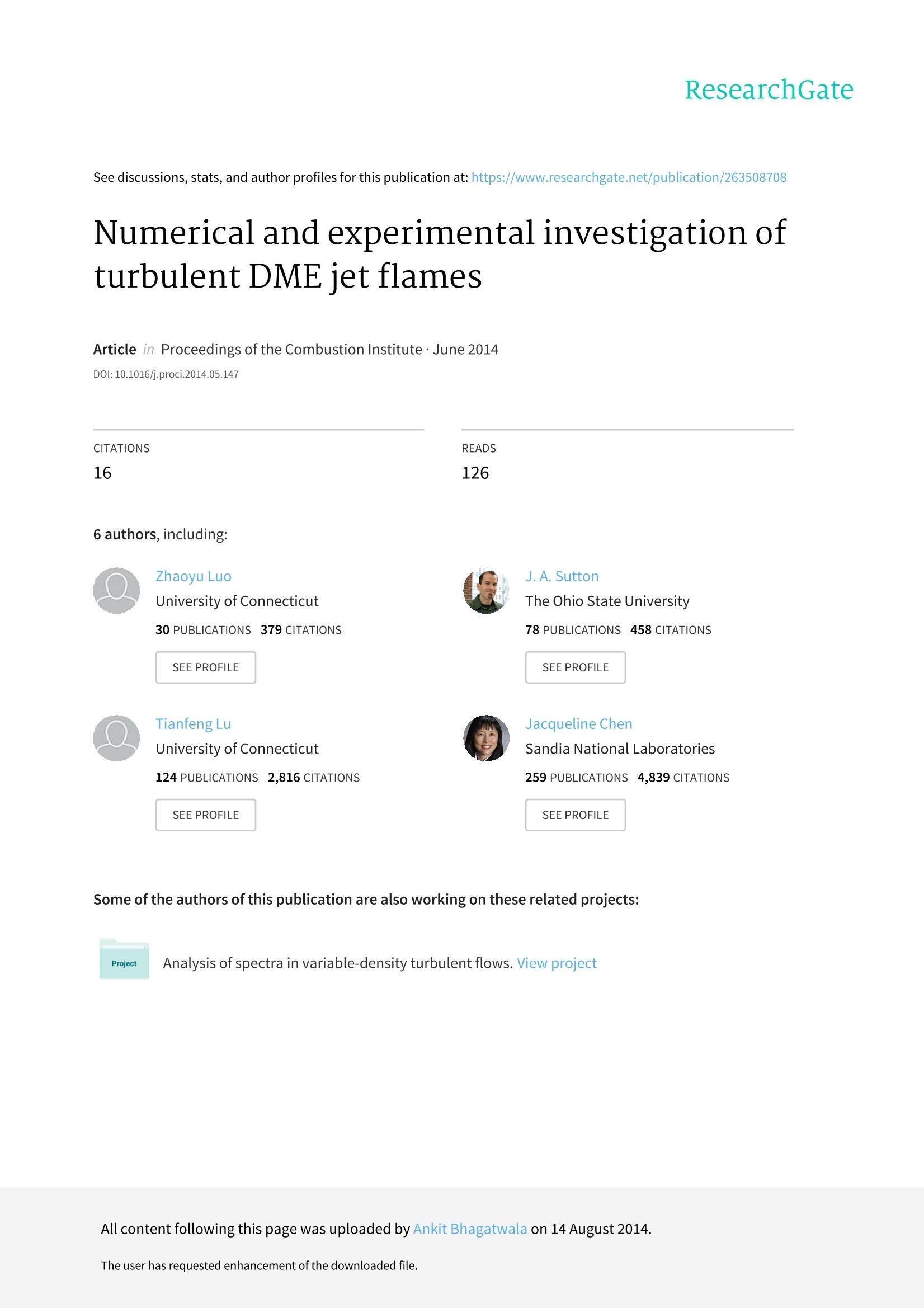
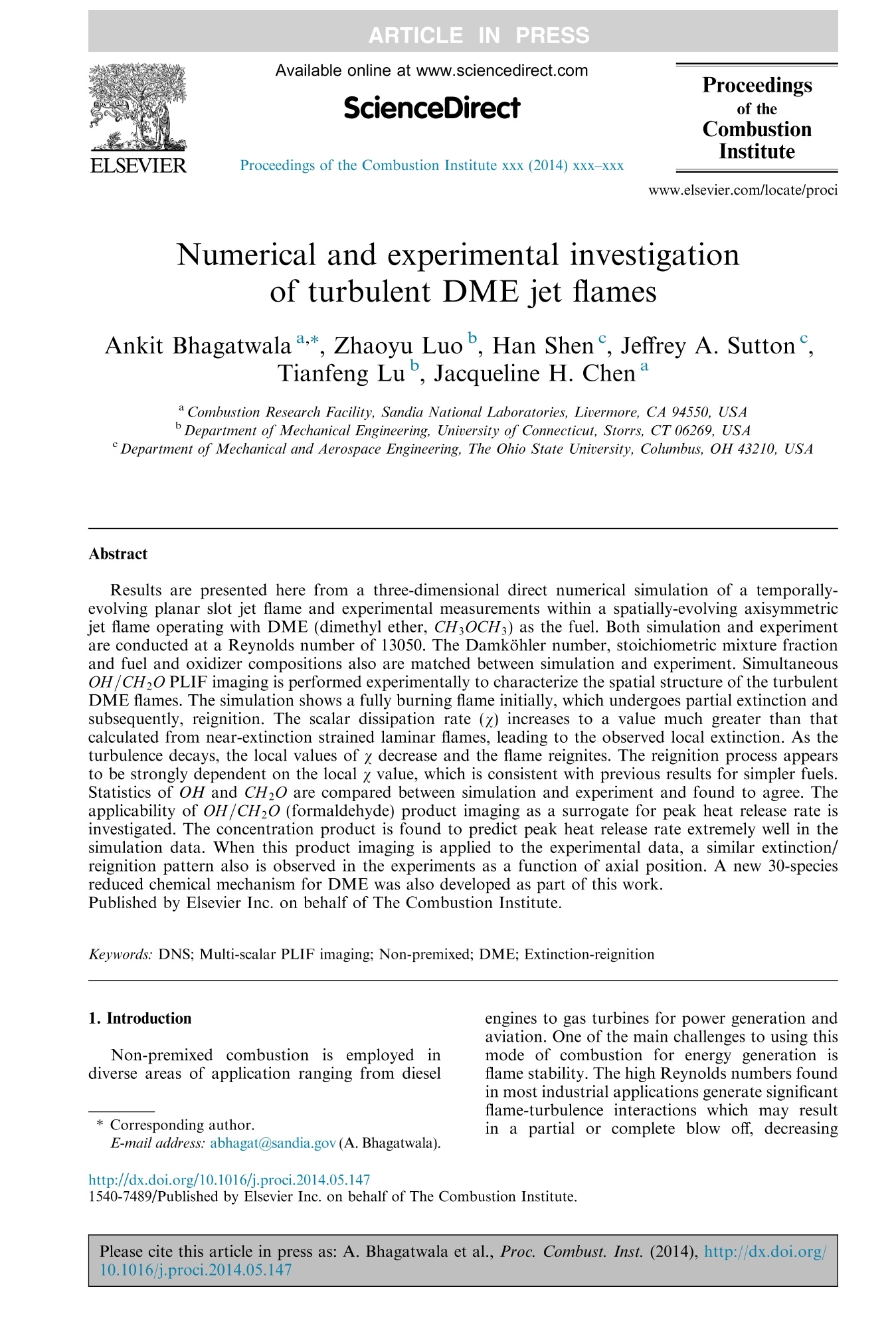

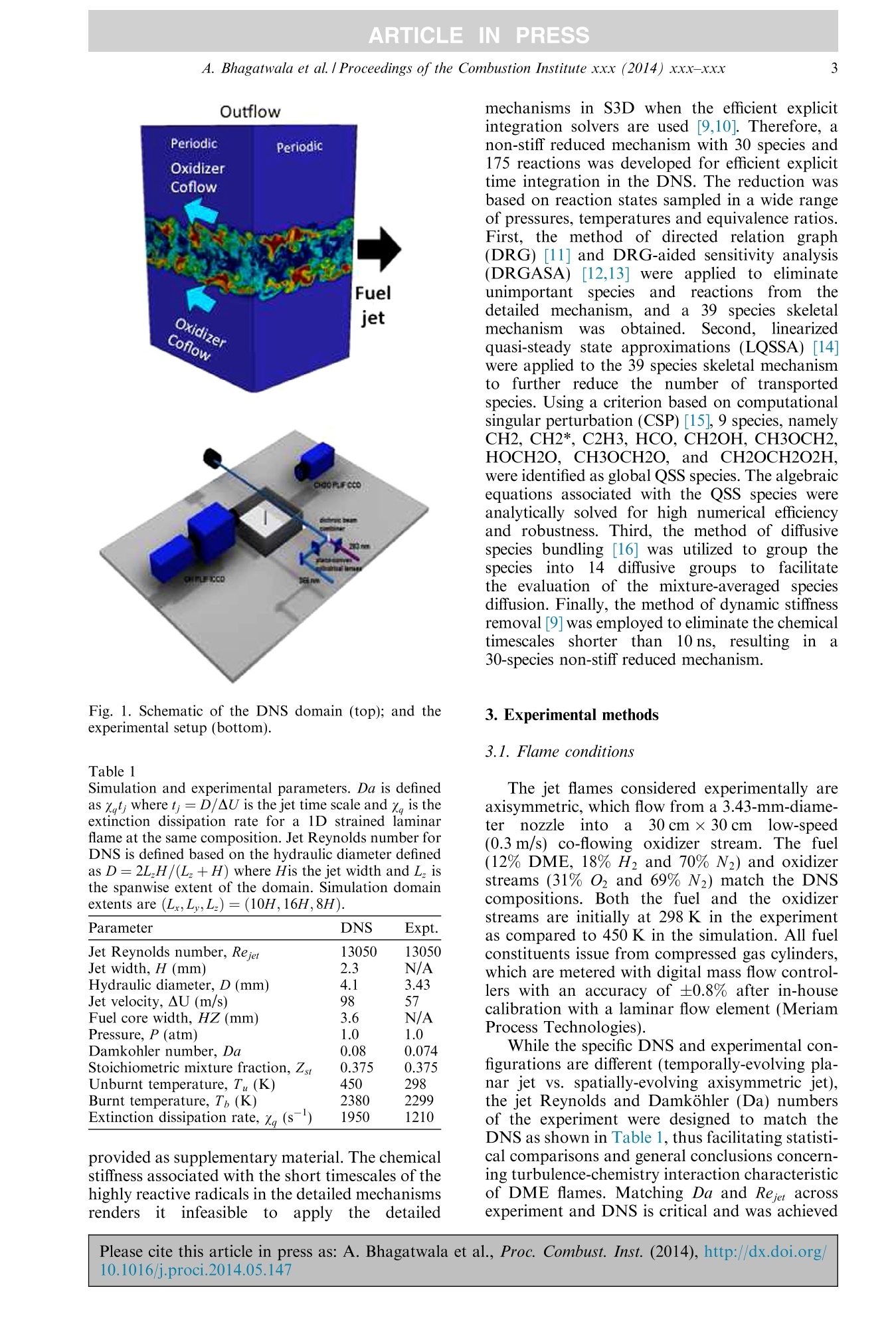
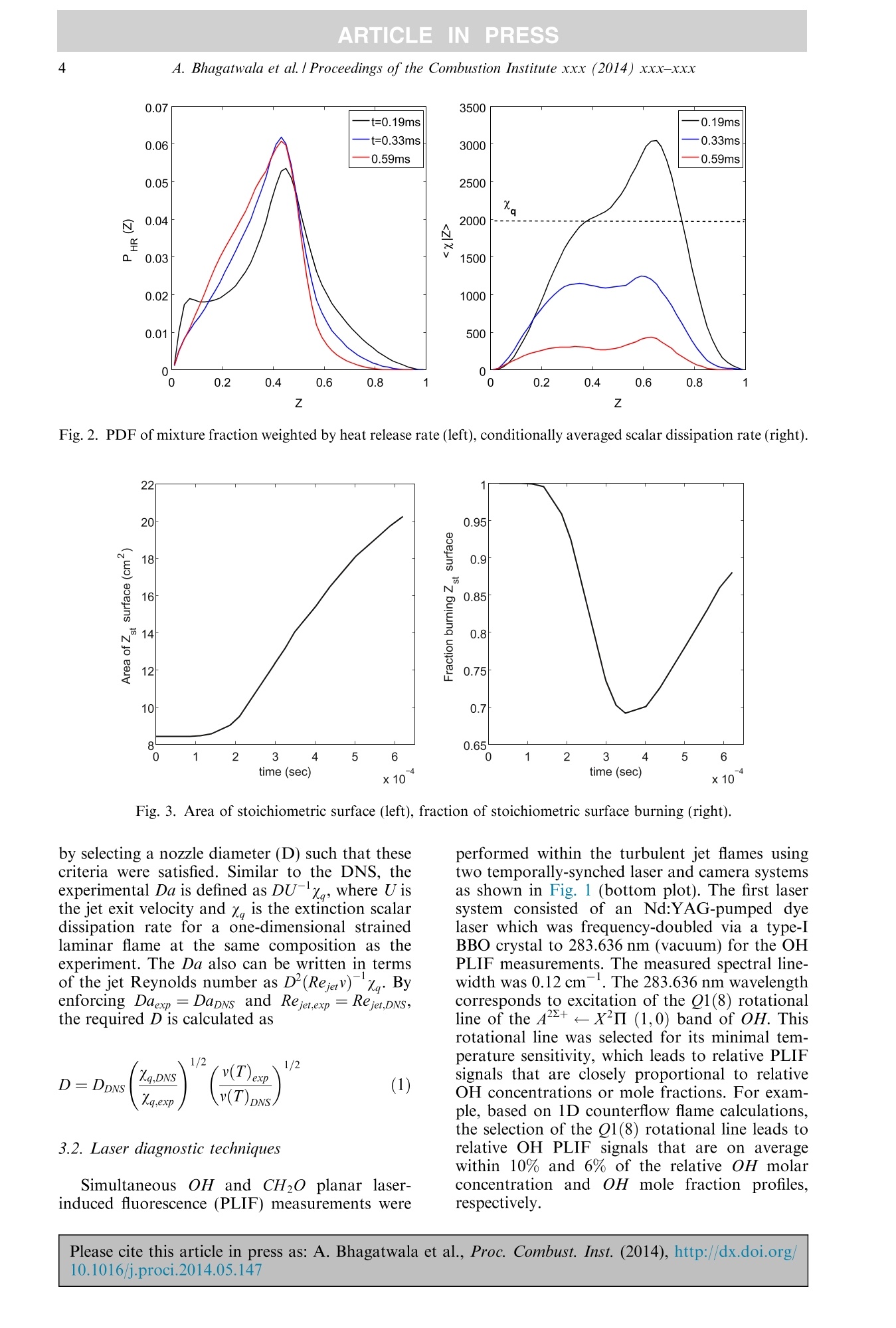
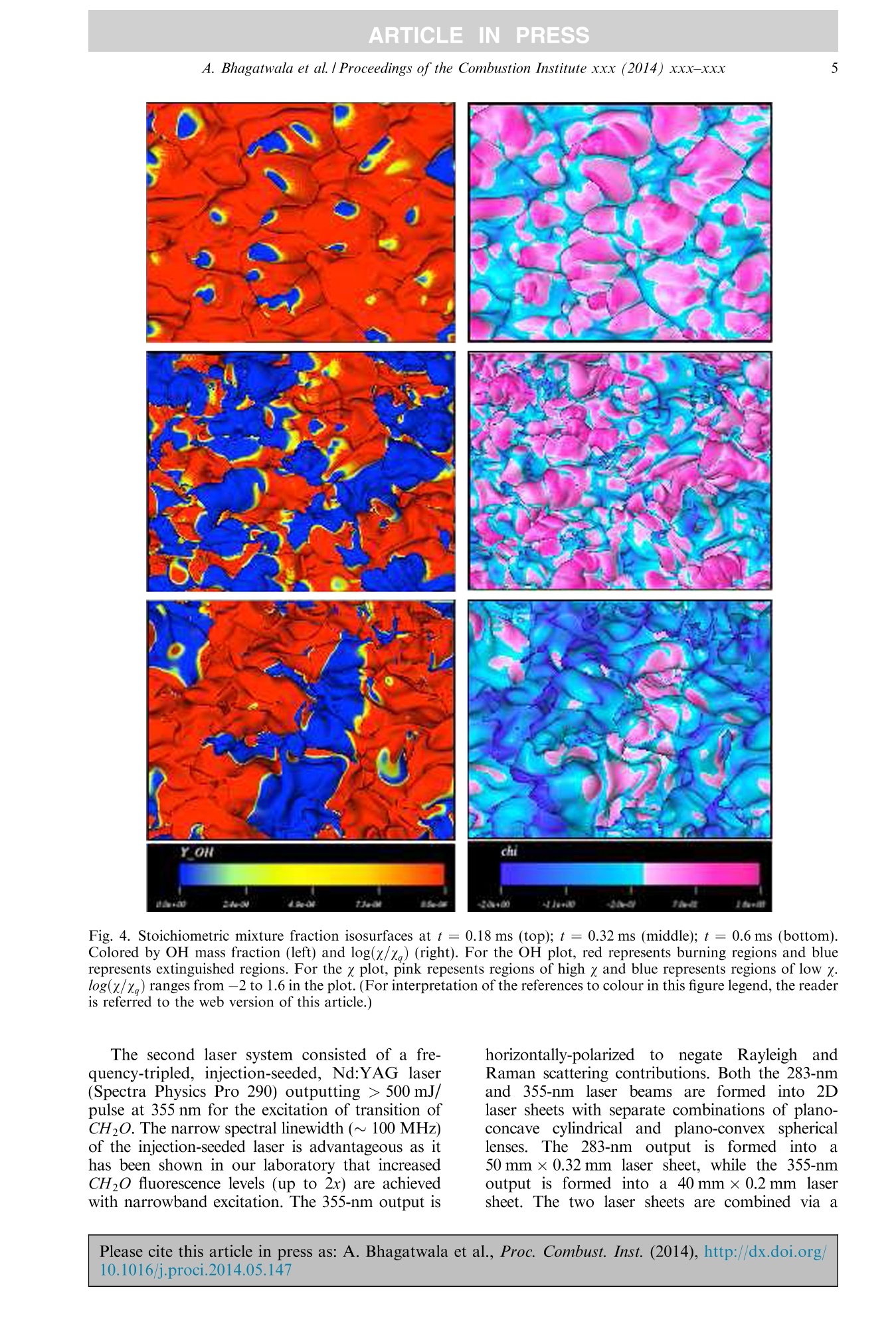
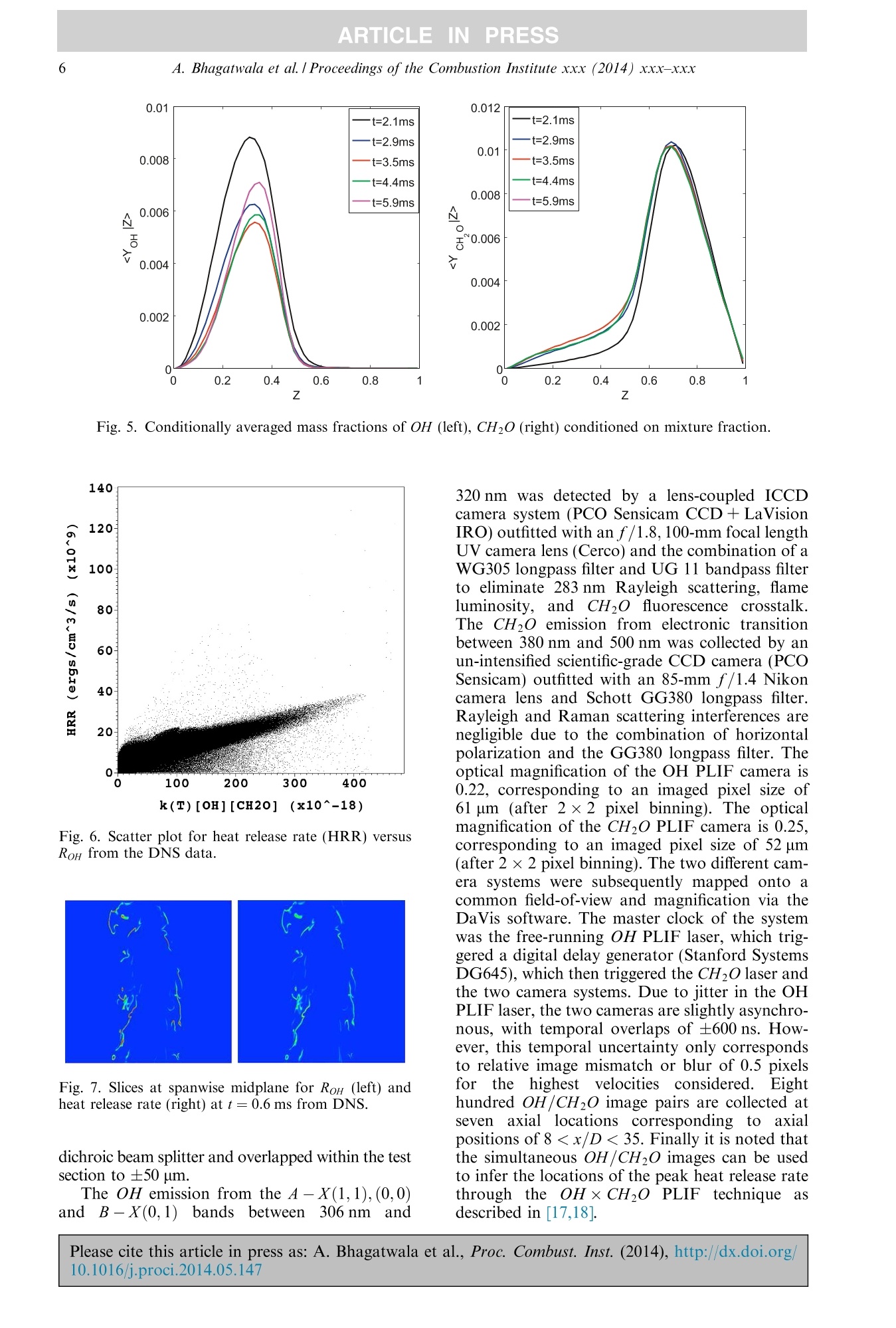
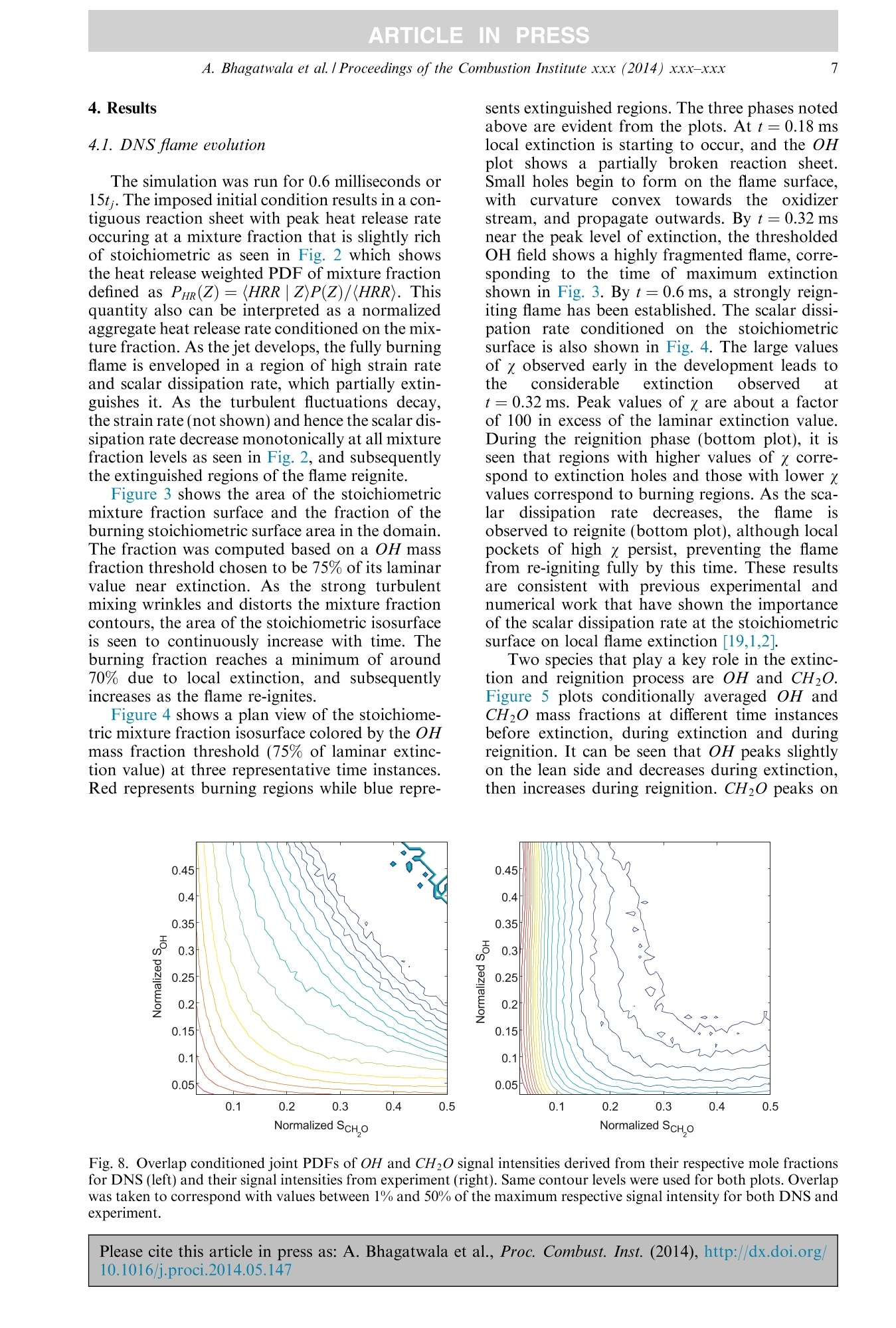
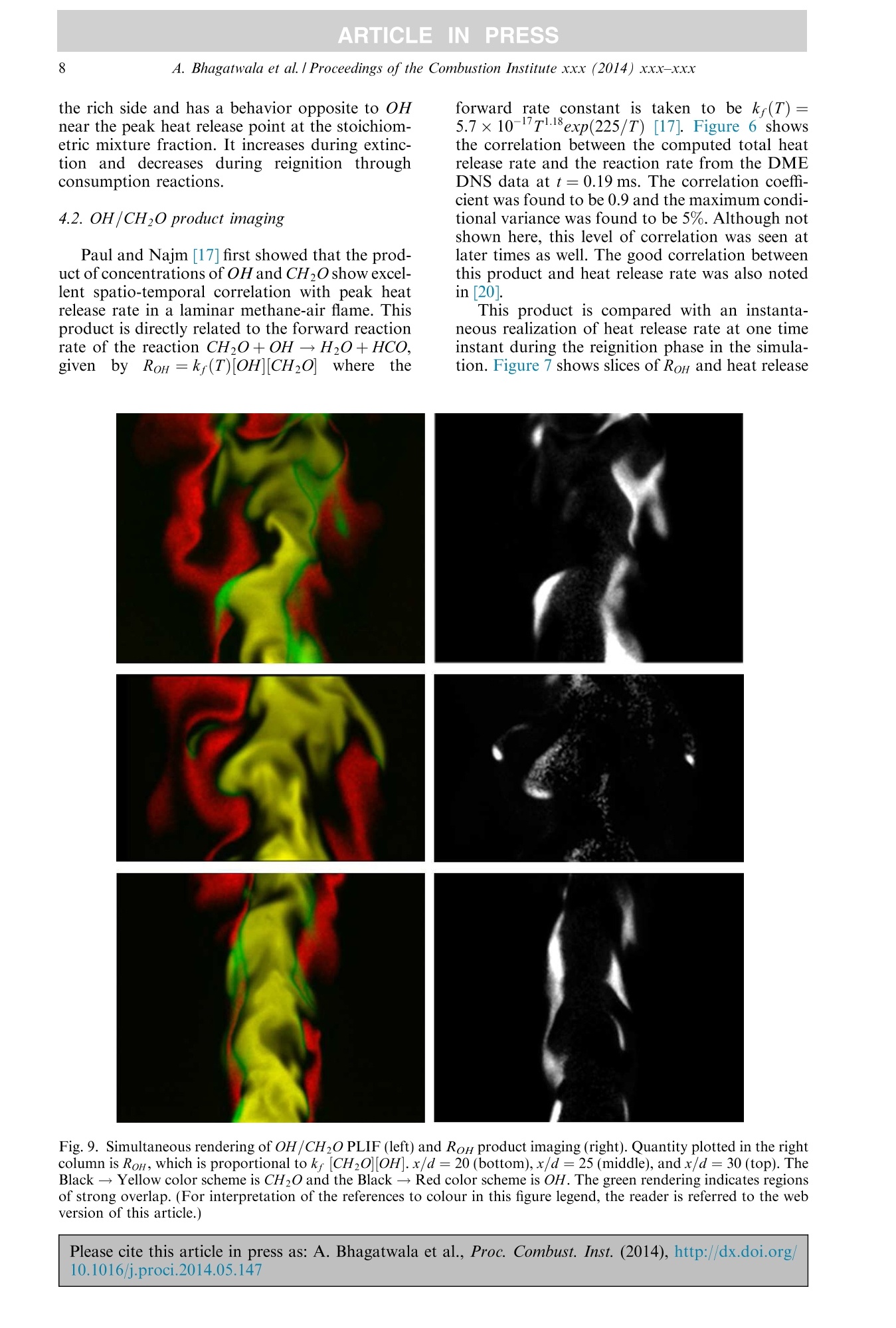

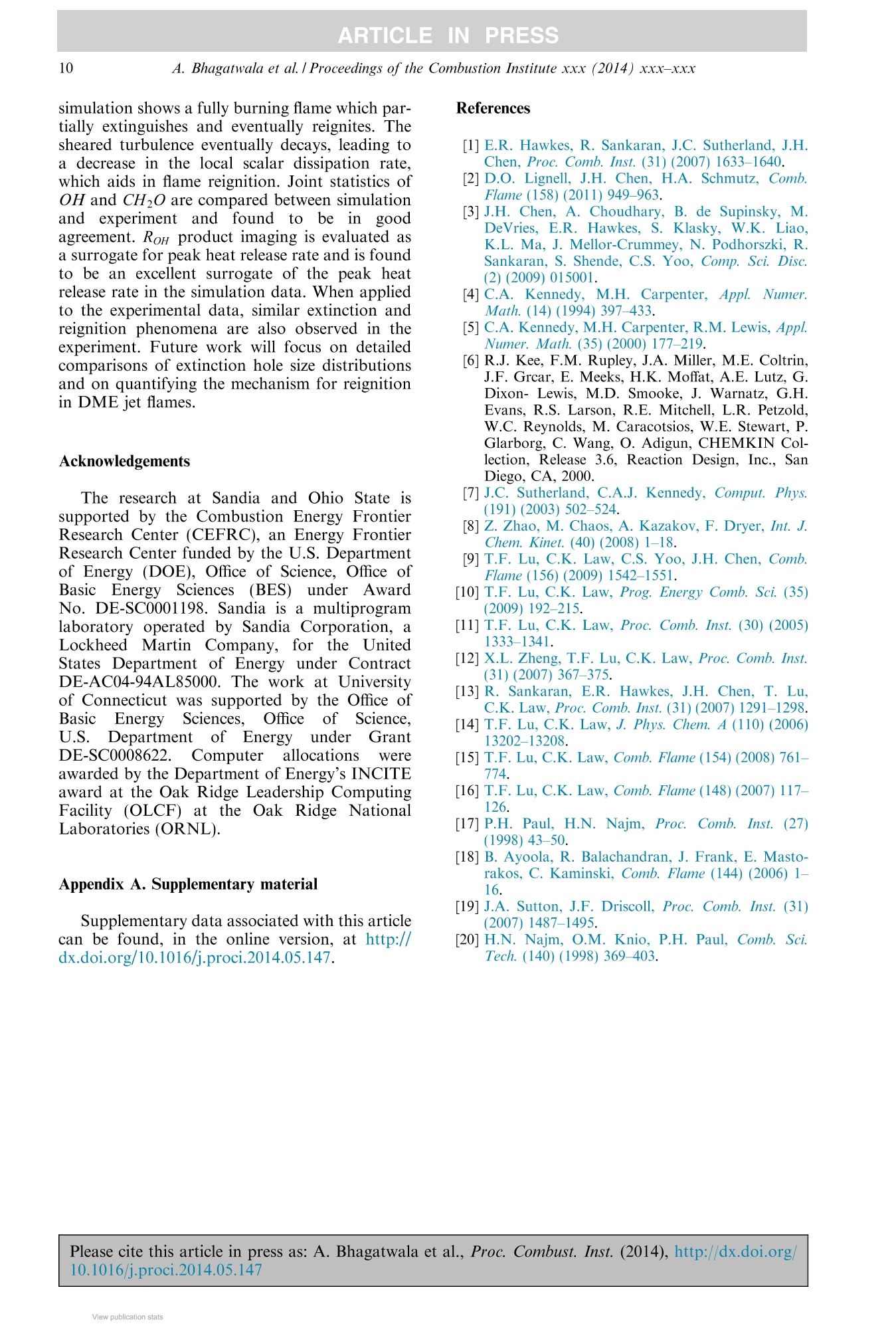
还剩9页未读,是否继续阅读?
北京欧兰科技发展有限公司为您提供《火焰中OH和甲醛自由基空间分布检测方案(流量计)》,该方案主要用于其他中OH和甲醛自由基空间分布检测,参考标准--,《火焰中OH和甲醛自由基空间分布检测方案(流量计)》用到的仪器有PLIF平面激光诱导荧光火焰燃烧检测系统、德国LaVision PIV/PLIF粒子成像测速场仪
推荐专场
相关方案
更多
该厂商其他方案
更多

















